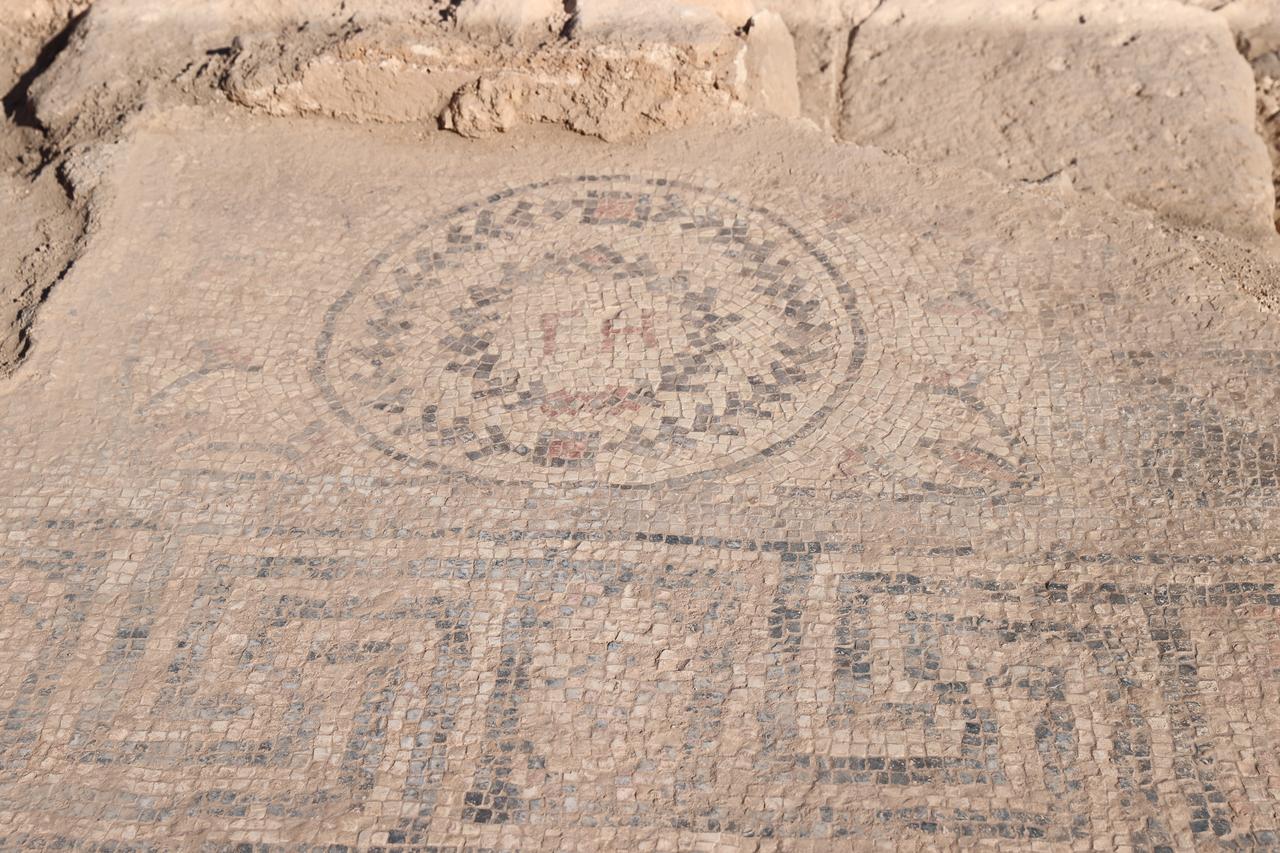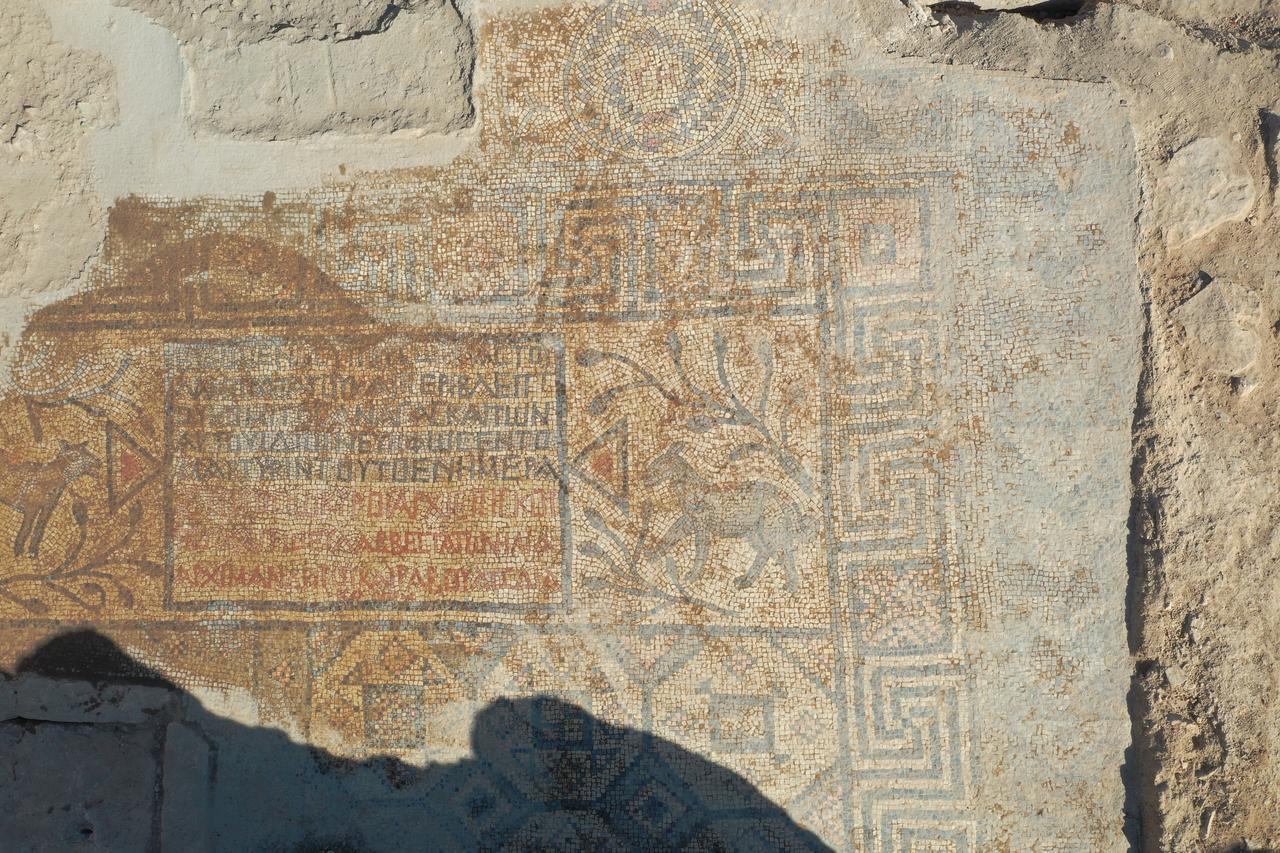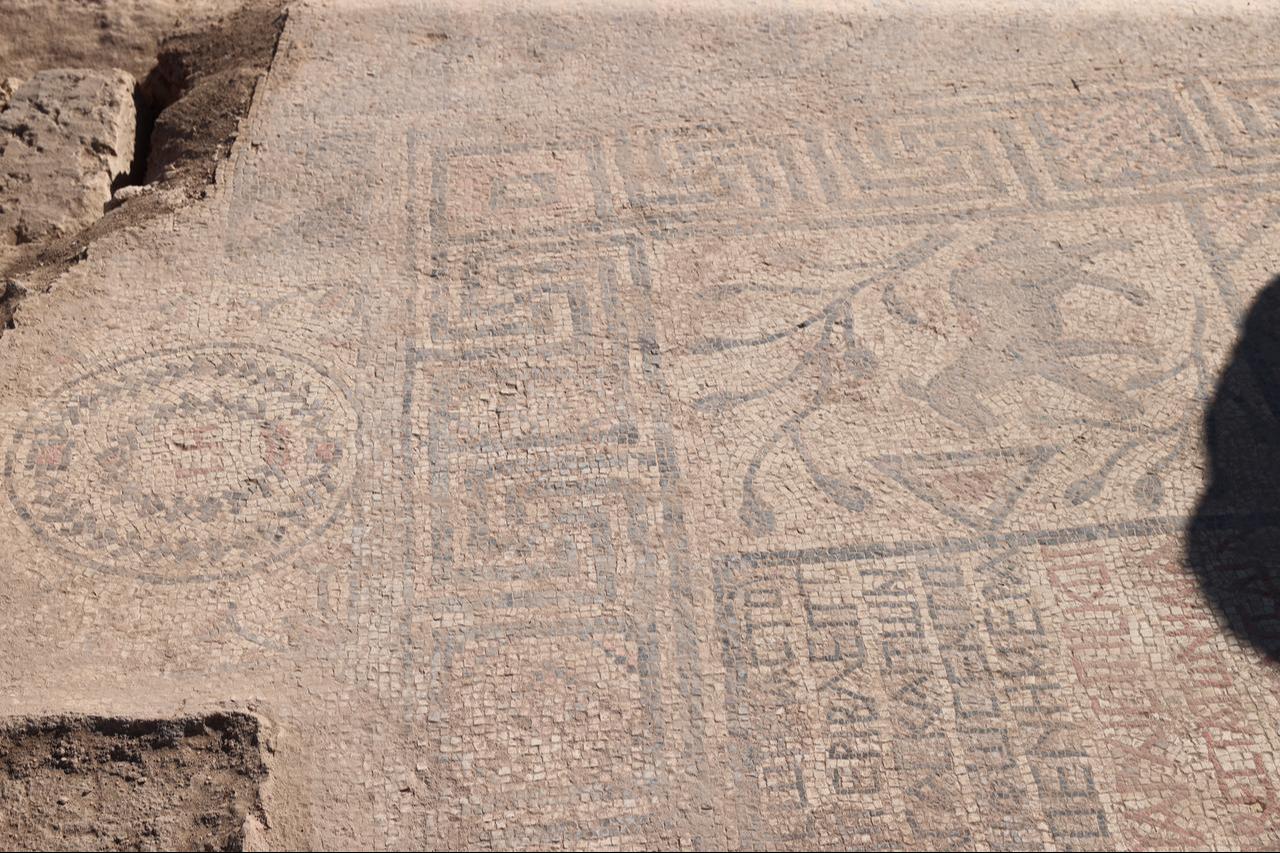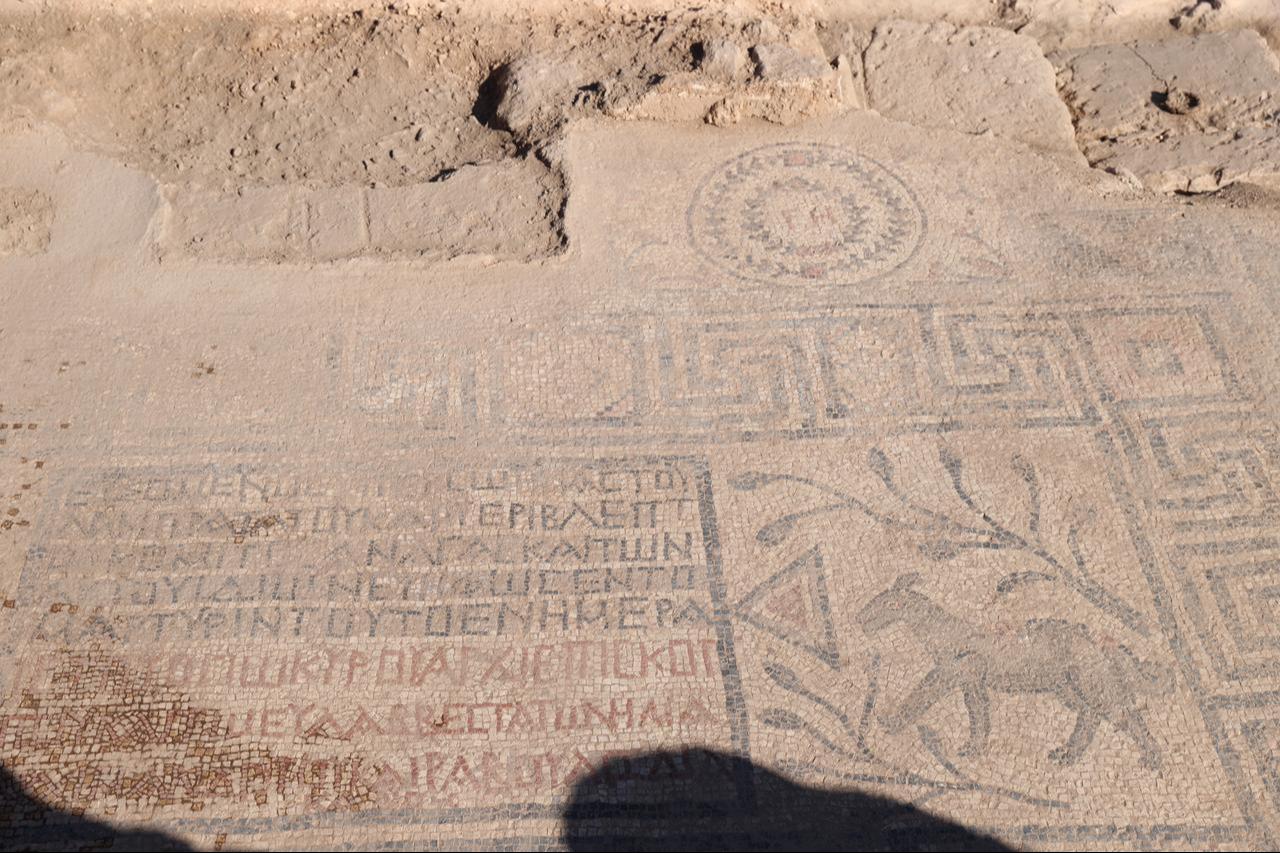Excavations at Urfa Castle, south of the Balikligol settlement, have unearthed a fifth-century floor mosaic inscribed in Greek, featuring botanical motifs, animal figures, and geometric elements, according to excavation officials.
The mosaic, made from small black, red and white stones, was brought to light during the final phase of 2025 work at the castle conducted under the "Legacy for the Future" project supported by the Culture and Tourism Ministry.
Excavation Director and Batman University Faculty Member Professor Gulriz Kozbe told state-run Anadolu Agency (AA) on Sunday that work at Urfa Castle has been ongoing for approximately six months this year.
"Initial examinations indicate the mosaic likely served as the floor of either a church, a chapel, or what we call a martyrium, a shrine to a martyr," Kozbe said.

The Greek inscription on the mosaic was written within a Byzantine epigraphic formula framework.
"The inscription shows that the floor was commissioned 'for the protection of Count Anakas and his family,'" Kozbe said.
The inscription identifies several religious officials involved in the construction. "We can determine from the names and titles that these date to between 60 and 495 A.D. This is clearly a 1,500-year-old Greek inscribed floor mosaic," Kozbe said.
The inscription mentions Bishop Kyros of the region, Elyas (Ilyas in Turkish) serving as the head priest, and Rabulus, who held the rank of deacon, a position assisting in churches where deacons held the rank of principal reader.

The mosaic features plant motifs, animal figures and geometric elements across its surface. Beyond the inscription, the team discovered medallion-shaped mosaics representing cosmic elements—air, water, earth and fire—at one corner of the floor.
"These medallions likely appear at all four corners of the floor," Kozbe said.
"This provides important clues about religious practices, but we will need to conduct more literature research and evaluate parallels to reach more definitive conclusions," Kozbe added.

Kozbe stated that excavation work for this year has been completed, with work continuing next year.
Religious personnel who served in the structure appear to have been buried at the site.
"Similar to the rock-cut tombs we found both on the southern slope of the castle and in the Kizilkoyun necropolis, we see evidence of burials here. We have found at least three, but work on these will continue next year," Kozbe said.
"This is an important discovery. Similar floor examples exist in the southeast and other regions of Anatolia. These names provide important clues about who held religious responsibility in this area and about the religious practices and rituals of the elite class, including a local commander," Kozbe added.

Sanliurfa Governor Hasan Sildak said the excavations revealing the city's ancient history are considered very important.
He noted that the castle suffered damage from the Feb. 6, 2023, earthquakes centered in Kahramanmaras, with some deterioration and wear appearing on the castle walls.
"Work conducted since 2024 has reached an important stage. We plan to complete these efforts by the end of 2026 and open the castle to visitors," Sildak said.
"This is very important for tourism and for restoring and promoting an important cultural link. Currently, the mosaic is under protection," he said.
"These excellent works will continue and will make important contributions to Sanliurfa's tourism, and we consider them very important developments for illuminating Sanliurfa's history and human history from a scientific perspective," Sildak noted.
Urfa Castle eagerly awaits meeting with visitors in the near future," Sildak concluded.